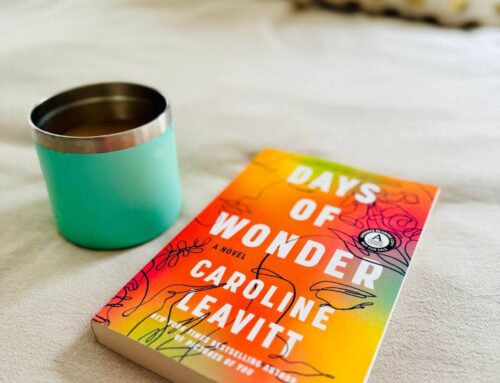Books that are heartbreaking, hilarious, and feature badass women? Sounds like the cocktail for my new favorite book. Claire Jimenez brings bravery to the page in her outstanding debut novel, What Happened to Ruthy Ramirez, where we meet the fiery family of Ramirez women from Staten Island.
For twelve years, they have dealt with the absence of middle-child, Ruthy Ramirez, who disappeared at the age of thirteen without a trace, leaving the family scarred. When the oldest sister, Jessica, spots a woman on a raunchy reality show with a birthmark that she’d recognize anywhere, she calls youngest sister Nina right away asking: could it be? When Dolores, their mother, learns of their plan to find their long lost sister, she insists on coming along, and bringing her best friend, Irene. The search for Ruthy becomes a family road trip that will finally force the Ramirez women to face their past and heal their future, whether it is with Ruthy or not.
Our March guest author Claire Jimenez is a Puerto-Rican writer and assistant editor who grew up in Staten Island and Brooklyn. She is the author of a short-story collection called Staten Island Stories, which received the 2019 Hornblower Award for a first book from the New York Society Library.
Jimenez is also a PhD student in English with a concentration in ethnic studies and digital humanities at the University of Nebraska–Lincoln. She received her MFA from Vanderbilt University. Her fiction, essays and reviews have appeared in Remezcla, Afro-Hispanic Review, PANK, The Rumpus, el roommate, Eater, District Lit, The Toast and the Los Angeles Review of Books, among other publications.
Keep reading for our exclusive interview with Claire Jimenez about the inspirations for her new book, her writing process, and what it was like growing up in New York.
What inspired What Happened to Ruthy Ramirez?
This novel was originally a short story that I began writing ten years ago. So, it is difficult to pinpoint its exact beginnings, but I know that I was thinking a lot about loss, family, the violence of migration, and identity. I watched a lot of reality tv in my twenties and the short story began with the premise: what if you recognized somebody from your past on tv, somebody who you lost? I’m interested too in the way that women disappear every day in real life and how representations of Black and Brown women are often missing or distorted in pop culture.
Which character do you relate to the most?
This is a novel that rotates between the perspectives of the sisters and the mother, so I had to spend a lot of time crafting and distinguishing their voices. Because I worked so hard trying to understand who they were, I feel close to all of them.
Do you outline before you write or do you let the story unfold as you go?
I don’t outline. I wish I did! It would make writing a lot easier. Almost always, I begin with voice. I hear a character in my head and then I just think about how they talk and who they are. The story usually follows.
You’ve previously published a collection of short-stories. How would you say that process differs from writing and publishing a novel? Which do you prefer?
I love writing in both forms. I think it very simply just depends on how much space you need to tell your story.
Who are some authors and/or creatives that inspire your work?
So many! If I listed all the authors I love it could fill up a whole book. So I will focus on the writers who have most recently been inspiring me over the past year: Kwame Dawes, Sigrid Nunez, Audre Lorde, Toni Morrison, Pedro Pietri, Edward P. Jones, and Victor Fragoso.
What does your ideal writing environment look like?
There has to be coffee, and I usually like for the room to be well lit. I appreciate (but don’t always have) a large clean surface to work on. Most of the time I’m writing on the couch and aspiring to actually sit down at my desk. The coffee is non-negotiable though! It is a must.
What was your favorite part as a writer growing up in New York?
When I was a teenager, I went to an afterschool youth program in Manhattan called Youth Speaks, which introduced me to the power of poetry. I’m grateful for those artists who took time to teach me, especially Robyn Rodgers, also known as DJ Reborn, who knew me as a shy young girl and encouraged me to write. This is also why I believe so much in arts education for youth.
What is next for Claire Jimenez?
Currently, I am teaching English and African American Studies at the University of South Carolina. I teach the MFA fiction students there. I am also continuing to work on a digital archive called the Puerto Rican Literature Project, documenting the work of Puerto Rican writers since the Jones Act.








Leave A Comment